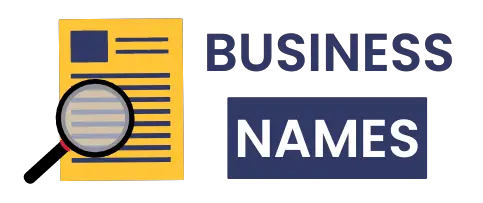The fixed-income landscape of 2025 presents what senior market strategists have termed a “generational opportunity for bond allocations”.
After more than a decade of suppressed interest rates, investors seeking safety and income now face a profoundly different and more rewarding environment.
However, this new era demands a more sophisticated approach than simply selecting the instrument with the highest advertised yield. The rules for generating safe, reliable income have fundamentally changed.
Deep Dive: U.S. Treasury Bills (T-Bills) – The Gold Standard of Safety

U.S. Treasury Bills represent the foundational asset for capital preservation. As the primary instrument for investors who prioritize safety and tax efficiency above all else, T-Bills serve as the benchmark against which all other “safe” income options are measured.
Mechanics and Core Features
T-Bills are short-term debt obligations issued by the U.S. Department of the Treasury. They are offered with maturities of one year or less, with the most common terms being 4, 8, 13, 17, 26, and 52 weeks. Unlike traditional bonds that pay periodic interest (coupons), T-Bills are zero-coupon securities. They are purchased at a discount to their face value (or “par value”), and the investor’s return is the difference between the purchase price and the face value received when the bill matures.

For example, an investor might purchase a $10,000 T-Bill for $9,900; at maturity, they receive the full $10,000, with the $100 difference constituting their interest income. T-Bills are sold at regularly scheduled auctions and can be purchased directly from the government through the TreasuryDirect platform or more commonly through a brokerage account.
The Unmatched Safety Profile
The principal safety of T-Bills is considered unparalleled in the global financial system. They are backed by the “full faith and credit of the US government,” which possesses the authority to raise taxes or print currency to meet its debt obligations. This backing effectively eliminates default risk, making T-Bills one of the safest investments available.
This government guarantee differs fundamentally from the insurance provided for bank deposits. While Certificates of Deposit are protected by the Federal Deposit Insurance Corporation (FDIC), this coverage is limited to $250,000 per depositor, per insured bank, for each account ownership category. For investors with substantial cash positions exceeding this limit, T-Bills offer a superior safety mechanism, as the U.S. government’s backing has no statutory limit. This makes them the preferred vehicle for holding large sums of cash with maximum security.
The Decisive Advantage: Tax Efficiency

The most significant strategic advantage of T-Bills, particularly for investors in the upper income brackets, is their favorable tax treatment. The interest income earned from T-Bills is subject to federal income tax but is completely exempt from all state and local income taxes. This feature can dramatically alter the comparative return profile of T-Bills versus fully taxable instruments like CDs and corporate bond funds.
The value of this tax exemption becomes more pronounced in a higher interest rate environment. When yields were near 1%, the absolute dollar value of the state tax savings was minimal. However, in the 2025 environment where T-Bill yields are in the 3.5% to 4% range, the tax savings are substantially larger and can be a decisive factor in investment selection. For an investor in a high-tax state such as California, New York, or New Jersey, the tax-equivalent yield of a T-Bill can be significantly higher than its stated nominal yield.
Consider a practical example for an investor in California’s top marginal tax bracket of 13.3%. If this investor is choosing between a bank CD yielding 3.90% and a T-Bill yielding 3.51%, a simple comparison of nominal yields suggests the CD is the better option. However, after accounting for taxes, the conclusion is reversed. The CD’s interest is fully taxable, so its after-tax yield at the state level is reduced. The T-Bill’s interest is exempt. The after-tax yield on the CD becomes just 3.38%, whereas the T-Bill investor retains the full 3.51% (before federal taxes). In this scenario, the T-Bill provides a superior return despite its lower headline rate.
2025 T-Bill Rate Analysis & Data
To provide a concrete basis for comparison, the following table presents recent auction results for U.S. Treasury Bills from the fourth quarter of 2025. These rates reflect the market’s expectations for short-term interest rates and serve as a realistic benchmark for investors.
| Security Term | Issue Date | Maturity Date | Investment Rate |
| 4-Week | 10/21/2025 | 11/18/2025 | 4.099% |
| 8-Week | 10/21/2025 | 12/16/2025 | 4.040% |
| 13-Week | 10/16/2025 | 01/15/2026 | 3.937% |
| 17-Week | 10/21/2025 | 02/17/2026 | 3.912% |
| 26-Week | 10/16/2025 | 04/16/2026 | 3.807% |
| 52-Week | 10/02/2025 | 10/01/2026 | 3.688% |
| Data sourced from U.S. TreasuryDirect auction results.10 The “Investment Rate” is the annualized rate of return on the bill, equivalent to an Annual Percentage Yield (APY). |
Deep Dive: Certificates of Deposit (CDs) – Engineering Predictability with a Ladder

Certificates of Deposit are the instrument of choice for investors who prioritize a guaranteed, predictable rate of return and absolute principal safety within insured limits. While they lack the tax advantages of T-Bills and the liquidity of bond funds, their strength lies in their simplicity and the ability to lock in a fixed yield for a predetermined period.
Mechanics and Core Features
A Certificate of Deposit is a savings certificate with a fixed maturity date and a specified, fixed interest rate. It is effectively a time-deposit account offered by banks and credit unions. When an investor purchases a CD, they agree to leave their funds untouched for a set term, which can range from as short as one month to as long as ten years or more.13 In exchange for this commitment, the financial institution pays a higher interest rate than it typically offers on standard savings accounts.
The core safety feature of CDs is government-backed insurance. For CDs issued by banks, the principal is insured by the FDIC up to $250,000 per depositor, per institution, per ownership category. For credit unions, equivalent protection is provided by the National Credit Union Administration (NCUA). This insurance makes CDs a loss-proof investment up to the coverage limit, provided the funds are held to maturity.
The Challenge: Illiquidity and Reinvestment Risk

The primary drawback of a CD is its lack of liquidity. If an investor needs to access their funds before the CD’s maturity date, they will typically incur an early withdrawal penalty. This penalty usually consists of a forfeiture of a portion of the interest earned, for example, three or six months’ worth of interest, though some institutions may have more severe penalties.15 This feature makes CDs an inappropriate vehicle for emergency funds or any capital that might be needed on short notice.14
A second, more subtle risk is reinvestment risk. This is the risk that when a CD matures, the prevailing interest rates will be lower than when the CD was purchased. The investor is then forced to reinvest their principal at a less attractive rate, resulting in a lower income stream. In the 2025 economic environment, where interest rates are expected to decline from their recent peaks, reinvestment risk is a significant concern for income-focused investors.
The Solution: Building a CD Ladder

The CD laddering strategy is a time-tested method for mitigating both illiquidity and reinvestment risk. The strategy involves dividing a total investment amount into several equal portions and investing each portion in a CD with a different, staggered maturity date.
For example, an investor with $50,000 could construct a five-year ladder by investing:
- $10,000 in a 1-year CD
- $10,000 in a 2-year CD
- $10,000 in a 3-year CD
- $10,000 in a 4-year CD
- $10,000 in a 5-year CD
With this structure, a portion of the total investment—$10,000 in this case—matures every year, providing regular access to capital without incurring penalties. This solves the liquidity problem. When the 1-year CD matures, the investor can use the funds if needed. If the funds are not needed, the investor can reinvest that $10,000 into a new 5-year CD. As this process continues each year, the investor’s portfolio will eventually consist entirely of higher-yielding 5-year CDs, with one maturing every 12 months.
In the context of 2025’s falling rate environment, this strategy’s primary benefit shifts from liquidity management to yield preservation. By building a ladder, an investor can lock in a portion of their capital at the high rates available today for several years into the future. While investors holding short-term T-Bills or variable-rate bond funds will see their income decline as rates fall in 2026 and beyond, the CD ladder investor will continue to benefit from the higher yields they secured during the peak of the rate cycle. The CD ladder thus becomes a powerful defensive tool against declining interest income.
2025 CD Rate Analysis & Data
The competitiveness of a CD laddering strategy depends on the availability of attractive yields across various terms. The following table presents a selection of the top nationally available CD rates for 1, 3, and 5-year terms as of late 2025.
Top Certificate of Deposit (CD) Rates
1-Year CDs
- Min. Deposit: $5,000
- Penalty: $25 + 2% of amount withdrawn
- Min. Deposit: $1,000
- Penalty: 6 months of interest
- Min. Deposit: $5,000
- Penalty: 3 months of interest
3-Year CDs
- Min. Deposit: $500
- Penalty: 6 months of interest
- Min. Deposit: $500
- Penalty: 3 months of interest
- Min. Deposit: $1,000
- Penalty: 6 months of interest
5-Year CDs
- Min. Deposit: $500
- Penalty: 12 months of interest
- Min. Deposit: Any
- Penalty: 12 months of interest
- Min. Deposit: $500
- Penalty: 20 months of interest
Deep Dive: Short-Term Bond Funds – Diversification Meets Liquidity

Short-term bond funds, available as either mutual funds or exchange-traded funds (ETFs), offer a compelling blend of diversification, professional management, and daily liquidity. However, this flexibility comes with a different set of risks compared to holding individual T-Bills or CDs to maturity, making fund selection a critical exercise for investors in 2025.
Mechanics and Core Features
A bond fund is a pooled investment vehicle that holds a diversified portfolio of individual bonds. Instead of buying a single bond, an investor buys shares of the fund, thereby gaining instant exposure to dozens or even hundreds of different bond issuers. This diversification helps to mitigate credit risk (the risk of a single issuer defaulting). Bond funds are highly liquid, as their shares can be bought or sold on any business day at the fund's Net Asset Value (NAV).
Several key concepts are essential for understanding bond funds:
- Net Asset Value (NAV): This is the per-share market value of the fund's underlying assets. Unlike the fixed principal of a CD, a bond fund's NAV fluctuates daily as the market prices of the bonds in its portfolio change.
- Duration: This is a measure of a bond fund's sensitivity to changes in interest rates, expressed in years. A fund with a duration of 2.5 years would be expected to see its NAV decrease by approximately 2.5% if interest rates rise by 1 percentage point. For investors concerned about rate risk, a lower duration is preferable.
- Expense Ratio: This is the annual fee charged by the fund to cover its operating costs. It is expressed as a percentage of assets and directly reduces the investor's total return. All else being equal, a lower expense ratio is better.
The Duality of Risk and Reward
The most critical distinction between a bond fund and individual bonds held to maturity is that a bond fund's principal is not guaranteed. An investor's return is composed of both the income (yield) distributed by the fund and any change (positive or negative) in its NAV. If interest rates rise unexpectedly, the market value of the bonds in the fund's portfolio will fall, causing the NAV to decline. This can result in a capital loss that could potentially offset or even exceed the income earned.

Given the economic outlook for 2025, leading investment strategists recommend a specific approach to bond fund investing. Experts from firms like iShares and BlackRock advocate for prioritizing income over the potential for price appreciation. This translates to a preference for funds that focus on short-to-medium term maturities—the "front and belly of the yield curve"—which carry less duration risk. By keeping duration low, investors can capture the attractive yields currently on offer while minimizing the potential for NAV declines if interest rates prove more volatile than expected.
Selecting the Right Fund for 2025
A disciplined selection process is paramount for choosing a bond fund that aligns with the goal of safe income generation. The primary criteria for 2025 should be:
- Low Expense Ratio: In the world of fixed income, where returns are more modest than in equities, fees have a significant impact. Top-tier short-term bond ETFs often feature expense ratios below 0.05%, or $5 annually for every $10,000 invested.
- Short Duration: To align with expert recommendations and minimize interest rate risk, investors should target funds with an average duration between 1 and 5 years.
- High Credit Quality: The fund's portfolio should be predominantly composed of investment-grade securities, such as U.S. government debt and corporate bonds rated 'BBB' or higher. This minimizes the risk of default-driven losses.
It is crucial for investors to look beyond a fund's advertised yield. A high yield is not a guaranteed return and may indicate that the fund is taking on excessive credit or duration risk. A sudden rise in rates or a negative credit event could cause a drop in NAV that wipes out an entire year's worth of income. In the 2025 environment, the most prudent strategy is to favor funds that prioritize capital preservation and high-quality holdings, even if it means accepting a slightly lower yield.
2025 Bond Fund Market Scan
The following table provides a curated list of representative short-term bond funds that meet the selection criteria outlined above. This is not an exhaustive list but serves as a starting point for investor research.
Comparing Short-Term Bond Funds
- 30-Day SEC Yield: 3.7%
- Expense Ratio: 0.03%
- Average Duration: 2.7 years
- Primary Holdings: U.S. Gov't & Inv. Grade Corp.
- 30-Day SEC Yield: 4.2%
- Expense Ratio: 0.04%
- Average Duration: 2.6 years
- Primary Holdings: Inv. Grade Corporate
- 30-Day SEC Yield: 4.7%
- Expense Ratio: 0.04%
- Average Duration: 1.9 years
- Primary Holdings: Inv. Grade Corporate (1-3 yr)
- 30-Day SEC Yield: 4.2%
- Expense Ratio: 0.30%
- Average Duration: 2.5 years
- Primary Holdings: U.S. Gov't & Inv. Grade Corp.
Head-to-Head Analysis: The 2025 Decision Matrix
With a detailed understanding of each instrument, investors can now engage in a direct comparative analysis to determine the optimal strategy for their specific needs. This section synthesizes the preceding analysis into a decision-making framework.
The Ultimate Comparison Table
The following matrix distills the key attributes of each safe income strategy, allowing for a clear, side-by-side comparison.
| Attribute | U.S. Treasury Bills | CD Ladder | Short-Term Bond Fund |
| Principal Safety | Highest; backed by full faith and credit of U.S. Gov't with no limit. | High; FDIC/NCUA insured up to $250,000 if held to maturity. | Not Guaranteed; principal (NAV) fluctuates with market conditions. |
| Nominal Yield | ~3.7% - 4.1% (Q4 2025) | ~3.9% - 4.3% (Q4 2025) | ~3.7% - 4.7% (Q4 2025) |
| Tax Treatment | Federally taxable; exempt from state and local taxes. | Fully taxable at federal, state, and local levels. | Income is fully taxable; capital gains distributions also taxable. |
| After-Tax Yield | Highest for investors in high-tax states. | Lower than T-Bills due to full taxability. | Lowest due to full taxability and potential for capital gains tax. |
| Liquidity | High; can be sold on secondary market before maturity. | Low; structured liquidity only at maturity dates of ladder rungs. | Highest; shares can be sold on any trading day. |
| Interest Rate Risk | Low; held to maturity, risk is to reinvestment at lower rates. | Mitigated; ladder locks in rates for multiple years. | Present; rising rates will cause the fund's NAV to decline. |
| Reinvestment Risk | High; must reinvest at prevailing rates every 4-52 weeks. | Mitigated; only one portion of the ladder is reinvested each year. | High; fund manager constantly reinvests maturing bonds at new rates. |
| Complexity | Low to moderate; requires understanding of auctions or brokerage purchase. | Moderate; requires initial setup and ongoing management of maturing CDs. | Low (to invest), High (to analyze); easy to buy but requires due diligence on holdings, duration, and fees. |
Scenario-Based Recommendations
The optimal choice is highly dependent on an investor's individual circumstances. The following scenarios illustrate how different investor profiles might approach this decision:
- Scenario 1: The High-Earner in a High-Tax State. For a professional, such as a doctor in New York or an executive in California, U.S. Treasury Bills are likely the superior choice.
- Scenario 2: The Retiree Needing Predictable Income. For an individual living on their investment income, a CD Ladder offers unparalleled predictability.
- Scenario 3: The Accumulator with a Near-Term Goal. For a younger investor saving for a major purchase, such as a house down payment within the next one to three years, a high-quality, low-cost short-term bond ETF is often the most suitable option.
- Scenario 4: The Balanced, Strategic Investor. The most sophisticated approach often involves a hybrid strategy, creating a "portfolio of safeties." This investor recognizes that no single instrument is perfect for all goals. They might use T-Bills for the core of their emergency fund due to their safety and tax benefits.
Conclusion: The New Rules for a New Era of Income
The return of meaningful yields on safe assets marks a significant and welcome shift for investors. However, capitalizing on this "generational opportunity" requires a new playbook. The simple act of chasing the highest headline rate is an outdated strategy that ignores the critical nuances of the 2025 financial landscape. The analysis presented in this report establishes a clear set of new rules for the modern income investor.
The New Rules of Safe Income:
- Rule #1: After-Tax Yield is King. In an environment of 4% to 5% yields, the impact of taxation is magnified. The state and local tax exemption on U.S. Treasury Bills can be the single most important factor in determining an investor's true, spendable return.
- Rule #2: Lock It In or Stay Liquid. With the Federal Reserve poised to lower rates, investors face a crucial strategic choice. The CD ladder offers a powerful tool to lock in today's high yields for the long term, while short-term bond funds provide the flexibility to adapt to changing market conditions.
- Rule #3: "Safe" Does Not Mean "Risk-Free". Each instrument carries its own distinct form of risk. Investors must understand and plan for the illiquidity risk of CDs and the market-driven NAV risk of bond funds.
- Rule #4: Active Management of Cash is Required. The era of passive cash holdings is over. The significant opportunity cost of leaving capital in low-yielding accounts demands that investors actively and strategically allocate their safe-money holdings to the instruments that best align with their specific goals.
Ultimately, the best safe income strategy for 2025 is not a one-size-fits-all prescription. It is a deliberate and informed decision, tailored to an individual's tax situation, liquidity needs, and time horizon. The era of earning a substantial return on safe assets has returned, but it will most generously reward the investors who approach it with diligence, strategy, and a clear understanding of these new rules.

